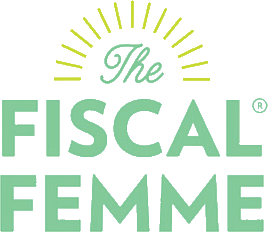Why and How to Rollover Your 401(k)
Some of us build up a collection of 401(k)s from past employers. We might even get emails about them, and they seem like they’re doing fine. We’ve heard diversifying is good, so maybe having multiple accounts is serving us well? But we also hear we should roll over our old 401(k)s? What should we do?
When you leave a company where you had a 401(k), you have four options.
Your options
Cash out.
Leave it.
Roll over into your new employer’s 401(k) plan
Roll over to an IRA (individual retirement account)
Cashing out will result in early withdrawal penalties if you are under the age of 59 ½ and potentially a hefty tax bill.
“Fun” fact. In certain cases, your employer can move the money from your 401(k). If you have less than $1,000 in your account, an employer is usually allowed to cash it out and cut you a check. If your 401k) balance is between $1,000 and $5,000, your employer is allowed to roll it over into an IRA. In those cases, you’d want to make the decision before your employer does.
If we have more than $5,000 in the account (from contributions at that job), your employer has to leave your money in the 401(k) plan.
Should I roll over my rollover my 401(k)?
Here are some reasons to roll your old 401(k) over to your new plan or an IRA:
Communication issues.
We often receive communication about our plans via company email. Once you’ve left a company, you may receive fewer updates about changes to the plan or the well-being of the company itself. You want to be in the know about what’s happening with your money and any changes to your 401(k) plan.
It’s a lot to keep track of.
It might sound like no big deal but even managing the passwords on multiple accounts can be a pain. With a bunch of retirement accounts (even two), it becomes more of a task to figure out how your money is allocated. For example, figuring out how much you have in bonds vs. stocks takes more time.
When you have it all in one place, it’s usually pretty quick to do a calculation on your own. Sometimes, there’s a handy little chart for us to reference.
Better investment options.
When someone asks me whether or not they should roll over their old 401(k) into their new 401(k) plan or an IRA, the first thing we do is look at the investment options available in their new 401(k) plan. Why? Our 401(k)s come with a predetermined set of investment options and all plans are not created equal. With an IRA on the other hand, we can invest in pretty much whatever we want.
Fewer options isn’t necessarily worse. Fewer options often makes our choices less daunting and overwhelming. We just want to make sure there are investment options where we can have a diversified portfolio with low fees.
Potentially lower fees.
It’s important to know what we are paying in fees in our retirement accounts. One or two percent might sound small, but this is money that’s coming directly out of our investment earnings. The less we pay in fees, the more our money can compound and grow for us.
These fees could look like an annual or monthly administrative fee, but they also come in the form of expense ratios on our investments. The expense ratios will vary based on which options are available to you in your 401(k) plan. Some are high and some are low. It’s important to take this into account when deciding whether or not to roll your old 401(k) into your new plan or an IRA.
How do I rollover my 401(k)?
If you’re ready to roll over your old 401(k), it’s actually pretty easy. Wherever you are rolling it over wants to make it easy for you to start investing with them. Go figure.
Once you choose where you’ll be rolling over your money (to your new 401(k) plan or an IRA), you’ll want to contact the administrator directly. If you are opening an IRA, you’ll need to choose a provider. They’ll want to confirm your identity with your social security number and birthday.
Once your account is ready, or if your account already exists, you can speak with the administrator over the phone to help you roll the funds over.
Two things to note:
Make sure you are setting up a direct rollover so that the money from your old 401(k) plan is going directly to the new account (NOT to you as the individual).
There are two types of 401(k)s and IRAs - Roth and Traditional - and the difference is their tax treatment. If you change the type of account when you roll over your old 401(k) into an IRA or new 401(k) plan, it will be a taxable event. If I roll over my Traditional 401(k) into a Roth IRA, there will be a tax bill associated with that.
Conclusion.
If you’ve been putting off rolling over your old 401(k), there’s no time like the present to do it! Luckily, it’s pretty easy. This article should help you consider some important factors before deciding whether to roll your old 401(k) into an IRA or your new 401(k) plan. Know your options and choose the one that makes the most sense for you.


